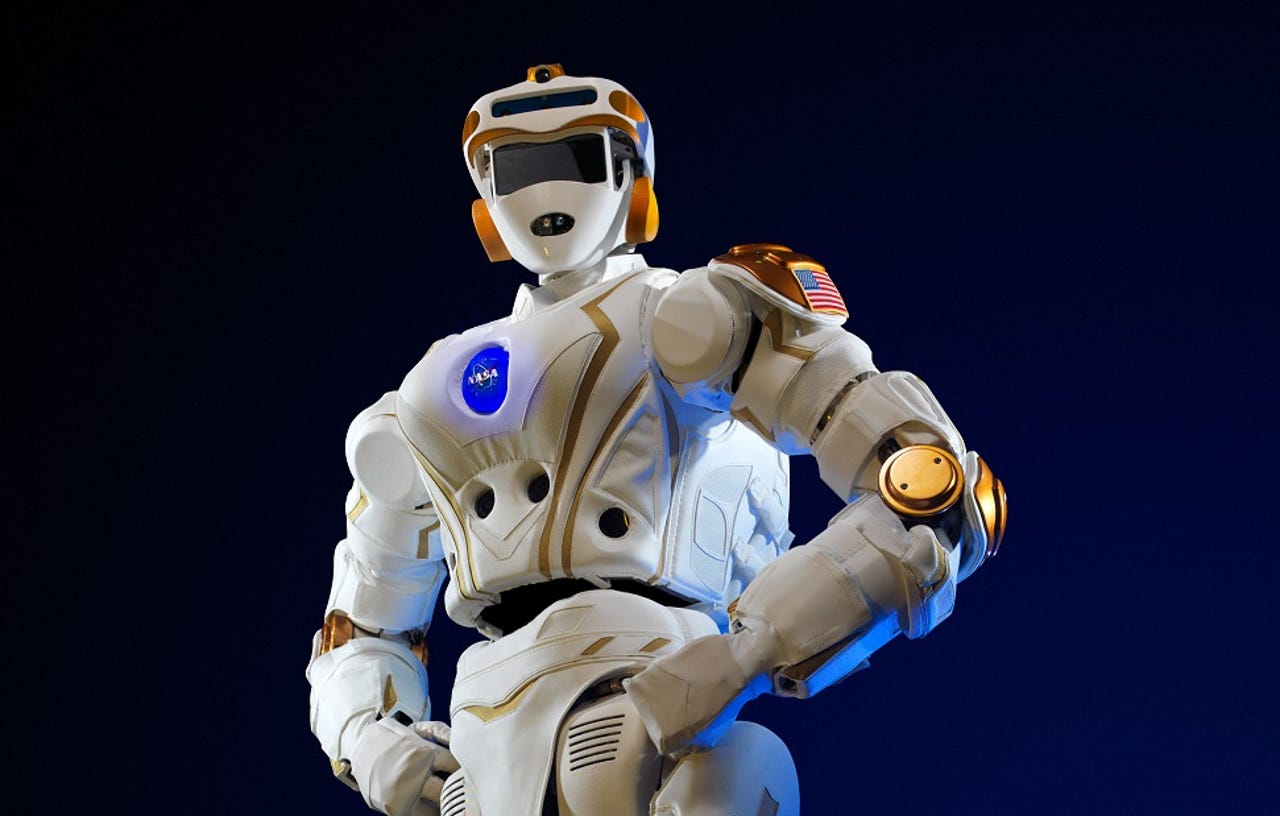Before heading to Mars, NASA's Valkyrie humanoid lands at MIT


Valkyrie has landed.
Late last week, NASA delivered a version of its six-foot-tall, 300-pound humanoid to MIT's Computer Science and Artificial Intelligence Laboratory (CSAIL).
In November, NASA announced that it would give one Valkyrie humanoid, also called R5, to MIT and one to Northeastern University, along with $250,000 each, to advance the capabilities of the massively complex system. Valkyrie had a disappointing showing at the 2013 DARPA Robotics Challenge trials and didn't qualify for the finals, so its makers are looking for some outside help to get the robot, which has cost about $6M to develop so far, closer to mission-ready.
The space agency hopes R5 will serve on long haul space missions, including those to Mars, both independently and alongside crew.
A team of CSAIL researchers will program their new toy to autonomously perform a variety of tasks that would allow it to help or even replace astronauts on missions. Valkyrie has four body cameras, 28 torque-controlled joints, and 44 degrees of freedom, making it incredibly dextrous (as illustrated in the groovy video below). The robot boasts more than 200 individual sensors, including 38 on each hand (six on each palm, and eight along each of its four fingers).
Because of the volume of data the robot collects, controlling it in real time is incredibly challenging. CSAIL investigators are hoping that Artificial Intelligence and deep learning algorithms will teach itself to better navigate the world as it gains experience.
Robotics
"Our work is about vetting the robot and seeing what it is capable of," says CSAIL principal investigator Russ Tedrake, whose team received a two-year research grant from NASA for the project. "If we can integrate the autonomy work with our planning and control algorithms, it could result in an unprecedented level of autonomous capabilities for a humanoid robot."
Tedrake's team at CSAIL's Robot Locomotion Group has worked with complex humanoids before. The group programmed Boston Dynamics' Atlas robot to compete in the DARPA Robotics Challenge. Atlas fared much better than R5, opening doors, turning valves, drilling holes, climbing stairs, and driving a car.
Collaborative humanoids will likely play an important role in the future. Robots that look and move like humans can navigate environments built for humans, which makes them particularly valuable in places like manned spacecraft. The DRC, which wrapped up last year, was inspired by the Fukushima Disaster. In order to avert a meltdown, a humanoid would have had to climb the power plant's stairs, open doors, turn valves, and throw switches -- tasks that proved far too complex for existing technology.
According to NASA:
NASA is interested in humanoid robots because they can help or even take the place of astronauts working in extreme space environments. Robots, like NASA's R5, could be used in future NASA missions either as precursor robots performing mission tasks before humans arrive or as human-assistive robots actively collaborating with the human crew. R5 initially was designed to complete disaster-relief maneuvers, however, its main goal is to prove itself worthy of even trickier terrain -- deep space exploration.